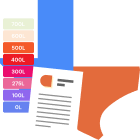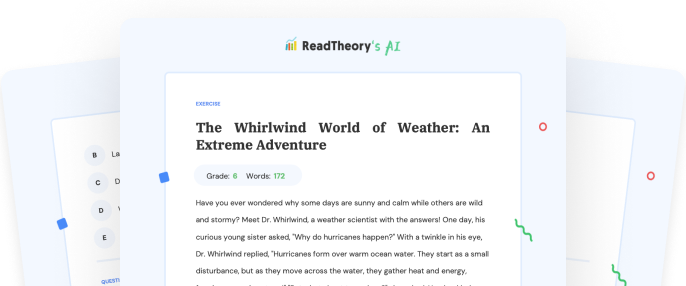Transform Your Teaching
with AI-Powered Worksheets
With ReadTheory’s Instant Worksheet Builder, you can create engaging, grade-appropriate worksheets tailored to your students in minutes. Spark curiosity, save time, and empower critical thinking with AI-powered tools designed for teachers like you.


Life on the Farm: The Calving Process
At the break of dawn, Farmer Jones prepares for an exciting day. One of his cows, Daisy, is about to give birth. It s calving season, a crucial time on the farm. Daisy s gestation period, like most cattle, was approximately nine months. During this period, Daisy required extra nutrition to ensure the health of her calf. The birth itself is a beautiful, natural process. After a couple of hours of labor, a new life enters the world. Calving not only brings joy but also contributes substantially to the ranch s economy. The newborn calf represents future income, either as a new milk-producing cow or as meat for market. The process also maintains the cycle of life in the ecosystem, contributing to biodiversity on the farm. Life on the farm continues, with the calving season adding a new chapter of growth and prosperity.
Question 1
What event is Farmer Jones preparing for at the start of the day?
Harvesting crops
A farmer s market
A barn raising
Daisy s birthday
Daisy s calving
Question 2
How long was Daisy s gestation period?
Three months
Six months
Nine months
Twelve months
Fifteen months
Question 3
Why was Daisy given extra nutrition during her gestation period?
To make her milk tastier
To make her grow bigger
To ensure the health of her calf
To prepare her for a race
To make her fur shinier
Question 4
What does the newborn calf represent for the ranch s economy?
An expense
A mascot for the ranch
An investment in new farming equipment
Future income
A new pet for Farmer Jones
Question 5
How does the process of calving contribute to the ecosystem?
It provides a new home for other animals
It provides more food for the farmer
It maintains the cycle of life, contributing to biodiversity
It helps the soil become more fertile
It doesn t contribute at all
 or share via
or share via

Assign the ReadTheory pretest to determine students' reading levels.

Why Teachers Love
Instant Worksheet Builder?

Tailored Content for Every Student
Craft worksheets with passages and multiple-choice questions customized to your chosen topic and grade level, ensuring relevance and engagement.

Save Hours
of Prep Time
Our AI, Lexi, generates complete worksheets—passages, questions, and answers—in minutes, freeing you to focus on teaching, not planning.

Standards-Aligned Learning
Every worksheet is designed to boost reading comprehension and critical thinking, aligning seamlessly with State Standards to help your students shine.
Personalized teaching
for personalized learning
Browse worksheets created and refined by educators using Lexi—your source for inspiration and ready-to-use resources.


ReadTheory is free for Teachers to use.
Join thousands of educators using ReadTheory for free. Sign up today and start creating in just minutes!





